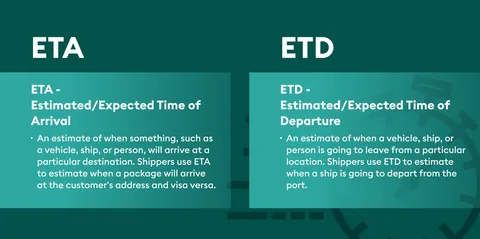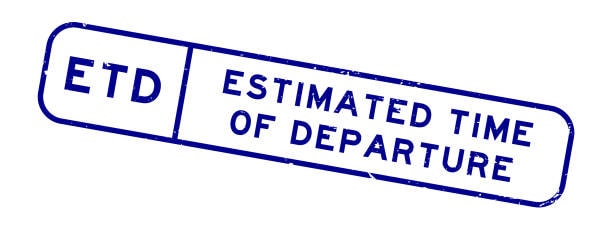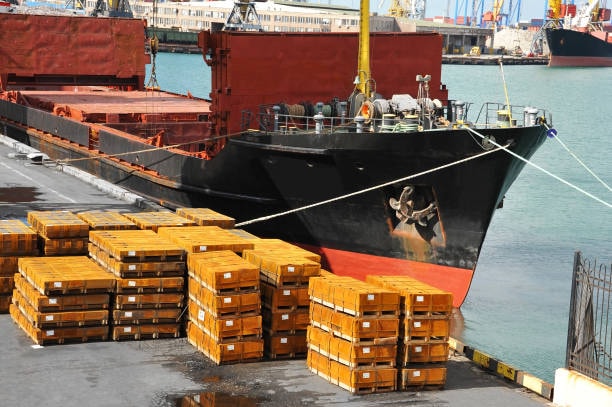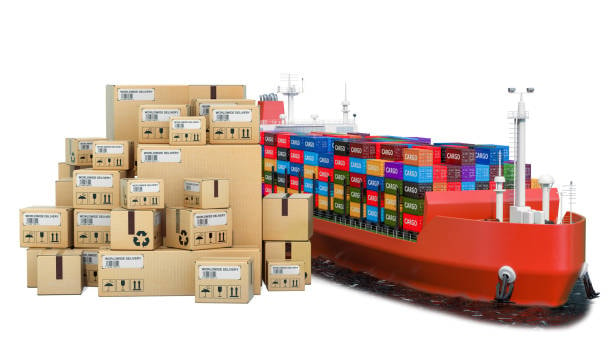
Perihalan Meta: Master ETD and ETA shipping terminology in the shipping industry with our comprehensive guide. Learn definitions, differences, importance, and best practices for efficient global logistics management in 2025.
In the fast-paced world of international shipping and logistics companies, understanding key terminology is crucial for successful supply chain management. Two of the most fundamental concepts that every shipping professional, importer, and exporter must grasp are ETD (Estimated Time of Departure) and ETA (Estimated Time of Arrival). These shipping milestones serve as the backbone of logistics planning, helping businesses coordinate their operations, manage inventory, and meet customer expectations.
At Shenzhen Guanwutong International Freight Forwarding Co., Ltd. (GWT Worldwide), we understand the critical importance of precise timing in global logistics. As a professional logistics service provider specializing in global freight forwarding, supply chain solutions, and cross-border e-commerce logistics, we leverage live tracking, accurate ETD and ETA tracking to deliver reliable, cost-effective, and customized logistics services to businesses worldwide.
What is ETD in Shipping?

ETD (Estimated Time of Departure) represents the expected date and time when a vessel, aircraft, or transport vehicle is scheduled to leave the port of departure. This critical timing marker serves as the foundation for all subsequent logistics planning and coordination activities.
ETD is typically provided by the carrier when goods are loaded or when the transportation plan is determined, marking the starting point of logistics operations. For shipping companies and freight forwarders, ETD represents more than just a departure time—it’s a commitment to service delivery that impacts the entire supply chain.

The accuracy of ETD depends on several factors including vessel availability, port congestion, weather conditions, and cargo loading procedures. Professional logistics providers like GWT Worldwide work closely with carriers to ensure accurate ETD information, enabling better planning for our clients’ supply chain operations.
What is ETA in Shipping?
ETA, or Estimated Time of Arrival, indicates when a shipment is expected to arrive at its destination port, taking into account the expected duration . This fundamental shipping term helps businesses plan their receiving operations, inventory management, and downstream distribution activities.
ETA represents the expected date and time of the vessel’s arrival into the port or defined position, commonly used in shipping schedules. For importers and exporters, ETA serves as a critical planning tool that enables them to coordinate customs clearance, warehouse operations, and final delivery to customers.
The reliability of ETA information directly impacts business operations, from just-in-time manufacturing to retail inventory management. Professional freight forwarders continuously monitor vessel movements and provide updated ETA information to help clients make informed decisions about their supply chain activities.
The Fundamental Difference Between ETD and ETA
Understanding the distinction between ETD and ETA is essential for effective logistics management. While both terms relate to timing in shipping operations, they represent opposite ends of the transportation journey. ETD focuses on the departure from the origin, while ETA concentrates on arrival at the destination.

This temporal relationship creates a logistics timeline that helps businesses plan their operations effectively. The time difference between ETD and ETA represents the transit time, which varies based on transportation mode, route selection, and external factors such as weather conditions or port congestion.
For global logistics providers, managing the relationship between ETD and ETA requires sophisticated planning systems and real-time tracking capabilities. This coordination ensures that customers receive accurate timing information throughout the shipping process.
Key Components of ETD Planning

Effective ETD planning involves multiple components, including the scheduling of the delivery vehicle, that logistics professionals must coordinate simultaneously. Cargo preparation, documentation completion, and vessel scheduling all contribute to establishing accurate departure times. Additionally, port operations, including loading procedures and customs clearance, play crucial roles in determining actual departure timing.

Weather conditions and seasonal factors significantly impact ETD accuracy, particularly for pengangkutan laut shipments. Professional logistics providers maintain contingency plans to address potential delays and communicate proactively with clients about any changes to scheduled departure times.
Port congestion represents another critical factor affecting ETD reliability. Major shipping hubs worldwide experience varying levels of congestion that can impact vessel departure schedules. Experienced freight forwarders monitor port conditions and adjust planning accordingly to minimize disruptions.
Essential Elements of ETA Calculation
Calculating accurate ETA requires consideration of multiple variables including transit time, routing options, and potential delays along the transportation corridor. Professional logistics providers use sophisticated tracking systems to monitor vessel movements and provide real-time updates to clients.
Distance and routing play fundamental roles in ETA determination. Different shipping routes offer varying transit times, with factors such as canal passages, weather patterns, and port calls affecting overall journey duration. Logistics professionals select optimal routes based on client requirements for speed, cost, and reliability.
Seasonal variations significantly impact ETA accuracy, particularly for ocean freight shipments. Peak shipping seasons, weather patterns, and holiday schedules all influence transit times and arrival predictions. Experienced logistics providers factor these variables into their ETA calculations to provide more accurate timing estimates.
Impact of ETD and ETA on Supply Chain Management
The precision offered by Estimated Time of Arrival (ETA) and Estimated Time of Departure (ETD) allows for efficient resource allocation, minimizing disruptions and enhancing overall productivity. This accuracy enables businesses to optimize their supply chain operations and reduce operational costs.
Inventory management relies heavily on accurate ETD and ETA information to maintain optimal stock levels, directly impacting customer experience . Just-in-time manufacturing processes depend on precise timing to coordinate raw material deliveries with production schedules. Any deviation from planned ETD or ETA can cascade through the supply chain, affecting multiple stakeholders.
Customer satisfaction directly correlates with ETD and ETA accuracy. Reliable timing information enables businesses to provide accurate delivery promises to their customers, building trust and loyalty. Professional logistics providers prioritize timing accuracy to support their clients’ customer service objectives.
Technology’s Role in ETD and ETA Tracking
Modern logistics operations rely on advanced technology systems to track and predict ETD and ETA information accurately. GPS tracking, satellite monitoring, and automated identification systems provide real-time visibility into vessel movements and cargo status.
Artificial intelligence and machine learning algorithms analyze historical data, weather patterns, and operational factors to improve ETA prediction accuracy. These technological advances enable logistics providers to offer more reliable timing estimates and proactive communication about potential delays.
Integration platforms connect various stakeholders in the supply chain, enabling real-time sharing of ETD and ETA information. This connectivity improves coordination between shippers, carriers, and receivers, resulting in more efficient operations and reduced delays.
Common Challenges with ETD and ETA Management
Port congestion represents one of the most significant challenges facing ETD and ETA management in the maritime industry and modern shipping operations. Major ports worldwide experience varying levels of congestion that can impact vessel schedules and cargo handling operations.
Weather-related delays pose ongoing challenges for maintaining accurate ETD and ETA schedules. Severe weather conditions can force vessels to alter routes, seek shelter, or delay departure, cascading effects throughout the supply chain.
Documentation and customs clearance issues frequently impact both ETD and ETA timing. Incomplete or incorrect paperwork can delay cargo release, affecting departure schedules and subsequent arrival times. Professional logistics providers emphasize proper documentation to minimize these risks.
Best Practices for ETD and ETA Communication
Proactive communication stands as the cornerstone of effective ETD and ETA management. Logistics providers should establish regular communication schedules with clients, providing updates on timing changes and potential impacts on operations.
Transparency in sharing both positive and negative updates builds trust between logistics providers and their clients. When delays occur, immediate notification with revised timing estimates enables clients to adjust their operations accordingly.
Multiple communication channels ensure that critical ETD and ETA information reaches all relevant stakeholders. Email updates, web portals, and mobile applications provide various options for clients to access timing information based on their preferences and operational needs.
The Relationship Between ETD, ETA, and Actual Times
While ETD and ETA represent estimated times, actual departure and arrival times (ATD and ATA) provide the reality of shipping operations. Tracking Actual Time of Departure (ATD) and Actual Time of Arrival (ATA) ensures accurate performance measurement.
Variance analysis between estimated and actual times helps logistics providers identify areas for improvement in their planning processes. Consistent tracking of these metrics enables continuous improvement in ETD and ETA accuracy.
Historical performance data supports better future planning by identifying patterns in timing variations. Professional logistics providers use this information to refine their estimation processes and provide more accurate timing predictions to clients.
Industry-Specific ETD and ETA Considerations
Different industries have varying requirements for ETD and ETA accuracy and communication. Automotive manufacturing demands precise timing for just-in-time production schedules, while retail operations may prioritize seasonal timing for merchandise availability.
Perishable goods shipments require enhanced monitoring and communication regarding ETD and ETA to ensure product quality and minimize waste. Temperature-sensitive cargo adds complexity to timing management, requiring specialized handling and tracking procedures.
High-value cargo shipments often involve additional security considerations that can impact ETD and ETA planning. Enhanced documentation requirements and specialized handling procedures must be factored into timing estimates.
Global Trade Implications of ETD and ETA
International trade regulations and compliance requirements significantly impact ETD and ETA planning. Customs procedures, documentation requirements, and inspection protocols all influence timing in cross-border shipments.
Free trade agreements and customs unions can affect transit times and arrival procedures, requiring specialized knowledge of regional regulations. Professional logistics providers maintain expertise in global trade requirements to ensure accurate timing predictions.
Currency fluctuations and trade policy changes can impact routing decisions and timing considerations. Logistics providers must stay informed about global trade developments to maintain accurate ETD and ETA planning.
Future Trends in ETD and ETA Management
Digitalization continues to transform ETD and ETA management through enhanced tracking capabilities and predictive analytics. Blockchain technology promises to improve transparency and accuracy in shipping documentation and timing verification.
Autonomous vessels and advanced navigation systems may improve ETD and ETA accuracy by reducing human error and optimizing route selection. These technological advances could significantly enhance timing reliability in maritime shipping.
Environmental considerations increasingly influence routing decisions and timing planning. Green shipping initiatives and emissions regulations may impact ETD and ETA calculations as the industry prioritizes sustainability.
GWT Worldwide’s Approach to ETD and ETA Excellence
At GWT Worldwide, we leverage our extensive experience in pengangkutan udara, sea freight, China-Europe railway transport, and international express services to provide accurate ETD and ETA information estimated departure time. Our integrated approach combines advanced logistics technology with a global network of trusted partners to ensure reliable timing throughout the shipping process logistics industry.
Our comprehensive services, including customs clearance, warehousing, and Amazon FBA shipping support, enable us to manage ETD and ETA considerations across the entire supply chain as a leading shipping company storage facility. Whether handling small business shipments or large-scale import/export operations, we focus on efficiency ocean sailing vessel, transparency, and customer satisfaction in all timing-related communications.
Conclusion:
Mastering ETD and ETA management is essential for success in today’s competitive global logistics environment. By understanding the definitions, applications, and best practices outlined in this guide, businesses can improve their supply chain efficiency and build stronger relationships with their logistics partners. As technology continues to evolve and global trade becomes increasingly complex, the importance of accurate ETD and ETA management will only continue to grow, making this knowledge invaluable for logistics professionals worldwide.


Thank you for reading!
Have questions, corrections, or better ideas? We’d love to hear from you!
We value every piece of feedback and promise to reply within 24 hours. Let's make this guide better together!
Note: Spam comments will not be published.